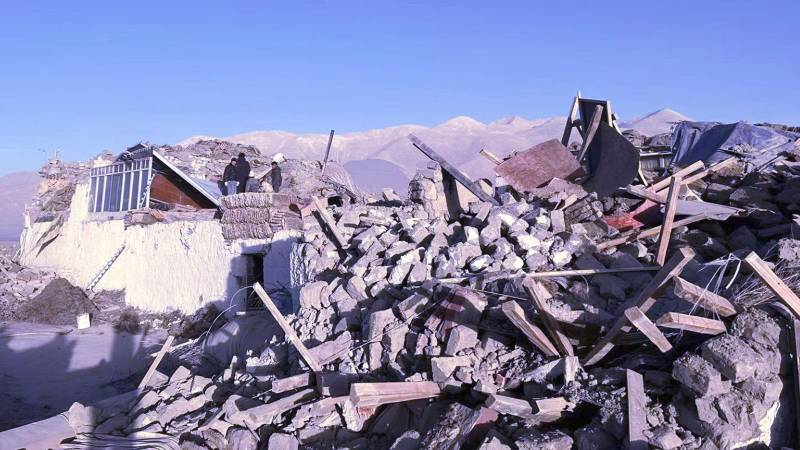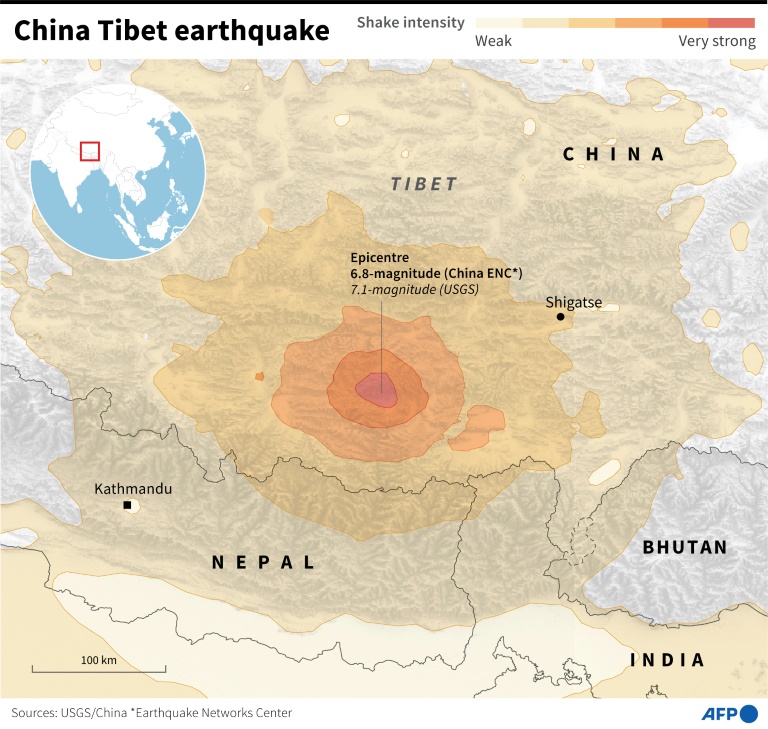What Caused the Massive Tibet Earthquake That Killed 95 Today
A devastating earthquake struck Tibet today, claiming the lives of at least 95 people and causing widespread destruction across the region. This tragic event has sent shockwaves through the international community as the region grapples with the aftermath. In this article, we will explore the causes of the earthquake, its impact, and the efforts being made to understand and mitigate such natural disasters in the future.
According to reports, the earthquake struck Tibet at around 7:30 AM local time, with its epicenter located near the mountainous areas of the region. The quake, measuring a magnitude of 7.0 on the Richter scale, has caused significant damage to buildings, infrastructure, and homes. Rescue teams have been dispatched to the affected areas, but access to some regions is difficult due to the rugged terrain.

Tibet, situated in a seismically active region, has experienced earthquakes before, but this particular event is one of the most powerful in recent years. With a death toll rising and hundreds of people injured, the region now faces the long road to recovery.
Earthquakes occur due to the movement of tectonic plates beneath the Earth’s surface. Tibet lies along the boundary of the Indian Plate and the Eurasian Plate, which is one of the most active seismic zones in the world. The interaction between these two massive plates is the primary cause of earthquakes in the region.
In the case of today’s earthquake, the sudden release of built-up pressure along a fault line between the Indian and Eurasian plates led to a violent shaking of the Earth’s crust. As the Indian Plate moves northward, it collides with the Eurasian Plate, causing the crust to buckle and form the Himalayan mountain range. This ongoing collision results in frequent seismic activity, with earthquakes being a natural consequence of this tectonic process.
Tibet’s high-altitude geography and the presence of major fault lines make it particularly susceptible to such events. The constant movement and pressure exerted on the region’s crust can lead to large-scale earthquakes, especially when stress accumulates over time.
The impact of the Tibet earthquake has been catastrophic. In addition to the significant loss of life, many buildings and homes have collapsed, leaving thousands of people displaced. Local infrastructure, including roads, power lines, and communication networks, has also been severely damaged. The destruction has made rescue efforts more challenging, as teams struggle to reach the most affected areas.

In response to the disaster, the Chinese government has mobilized emergency teams, sending medical personnel, supplies, and rescue workers to provide immediate assistance. International aid organizations are also offering support to help the victims and provide much-needed relief.
While earthquakes are unpredictable and difficult to prevent, there are several measures that can help mitigate their effects and reduce the loss of life. One key area of focus is earthquake-resistant building practices. In regions prone to seismic activity, buildings and infrastructure must be designed to withstand the shaking of an earthquake. Modern engineering techniques can make structures more resilient, potentially saving lives during a quake.
https://koverstory.com/
Additionally, early warning systems are being developed to give communities more time to prepare for earthquakes. These systems can detect the initial tremors of an earthquake and send alerts to people in affected areas, allowing them to take shelter or evacuate before the full force of the quake hits.
In Tibet, where infrastructure is often more vulnerable due to the region’s rugged terrain and high altitude, improving resilience through better construction practices and early warning systems is crucial. The government has made some progress in strengthening disaster preparedness, but the scale of today’s earthquake highlights the need for continued investment in these efforts.
Source: https://www.ndtv.com/world-news/tibet-earthquake-linked-to-tectonic-stress-in-lhasa-block-7420667
https://www.ndtv.com/india-news/earthquake-today-live-updates-tremors-felt-in-patna-guwahati-after-7-1-magnitude-earthquake-in-tibet-7416365





